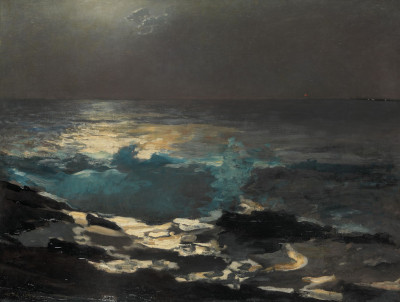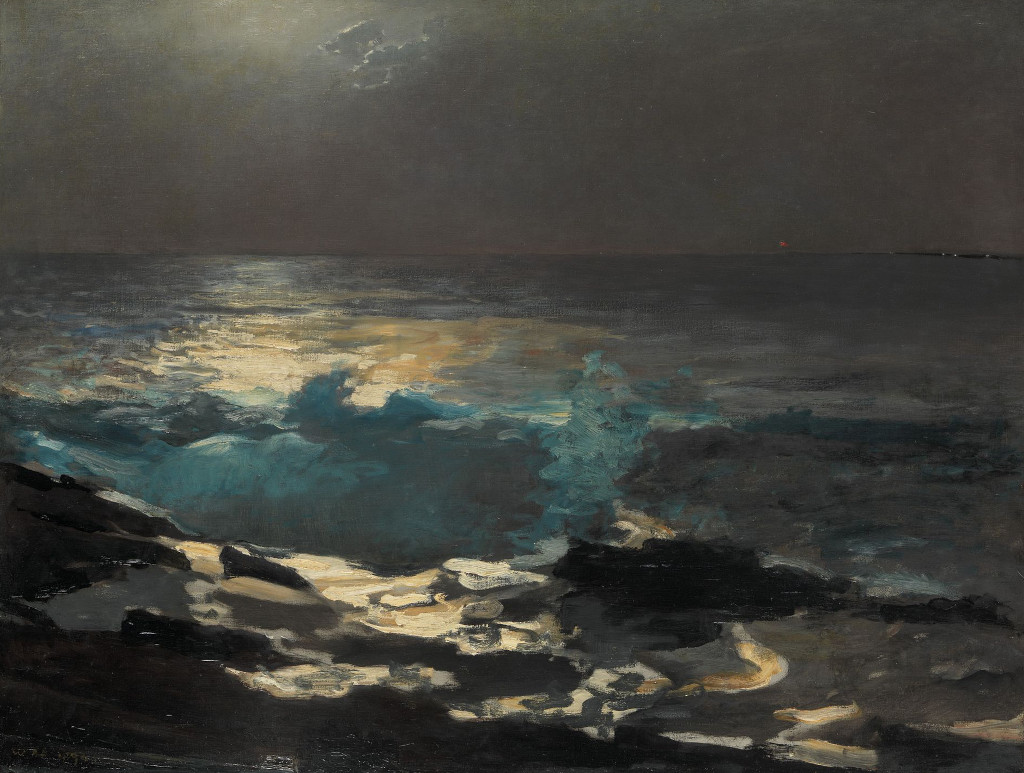Moonlight, Wood Island Light is a painting by Winslow Homer from 1894 which can now be found at the Metropolitan Museum of Art in New York City, USA. The artwork is from the seascape genre, in which the artist was highly regarded.
Winslow Homer ran out of his house to capture a precise moment in time. He would feature this seascape within moonlight and worked quickly in order to finish the painting whilst the same conditions remained. He is believed to have spent only four or five hours in total on this artwork, though by 1894 he would have been able to work within the seascape genre almost as second nature. This piece is devoid of human activity, which is perhaps how he could finish it in one sitting, and his seascape paintings often varied in their use of nature with humanity. In some examples we would have figures in the foreground around who the whole piece was based, such as sailors or travellers, whilst other depictions would have them just as supporting elements who could help provide a sense of perspective. In later years he also became interested in dramatic weather conditions, such as hurricanes. This piece feels a little more relaxed, with darkened lighting and a relatively calm sea.
Other than the splash of sea water which appears in the foreground, most of the scene appears to be sleeping, as night draws in. The sky and waves in the distance are in relatively similar tones, avoiding the stark contrast on either side of the horizon which could be found in other works by Homer. The overall darkness spreads across whole composition, just broken up a little by the moon light that runs vertically along the left hand side of the painting. Homer would have used only a few tones for this piece which is entirely in oils, and measures 30 3/4 x 40 1/4 in. (78.1 x 102.2 cm). Its inclusion at the Metropolitan Museum of Art ensures that many members of the public can enjoy this piece in person, with this venue being one of the most visited art galleries or museums in the world. To even have it out on show means that this is an important piece as the Met owns such a large collection that only a fraction of their artwork can be on display at any one time.
The focus of the artist across the sea is believed to have been a lighthouse on Wood Island, which lies to the south of Prouts Neck, Maine. This was a favourite location for the artist to work from and also close to his own studio. There is a small dab of paint within this painting that represents the lighthouse itself, although it would be hard to tell this from the artwork alone. The artist would speak about this painting at a later date, which is how we know its location and also the speedy manner in which the artist delivered it. Some of his other paintings could take a month to complete, or even be re-worked several years later. There are some rare examples of where Homer decided to make amendments even after the piece had been sold, such was his commitment to the impossible pursuit of perfection within nature and art. He remains today one of the most famous American artists in history.





